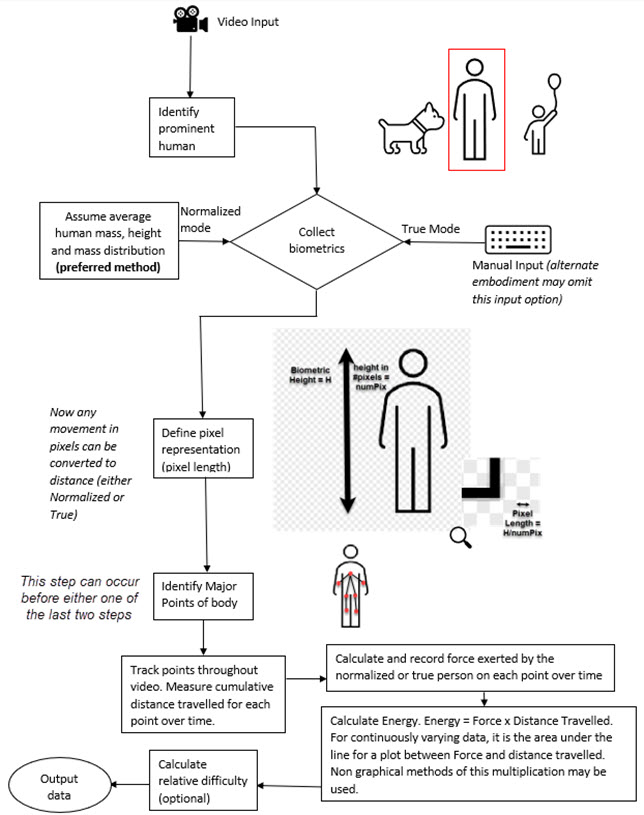
Home List your patent My account Help Support us
Measure movement exerted by person in a video, compare form.
[Category : - SOFTWARES- HEALTH- Fitness]
[Viewed 1425 times]
The invention is a provisional patent in the US.
Link to the invention: Link
In plain English, this invention is a method that allows a system (a Mirror or otherwise) to calculate the amount of energy exerted purely based on the movement of a prominent person appearing on a video. In the normalized mode, the method calculates the energy spent by an average person, with average mass distribution, who may perform the same motions in said video. This allows for an objective measure of difficulty of a workout relative to other workouts. I also updated the invention to determine body form deviation comparisons (between trainer and trainee) and a mention of automatic reps counting if the method is used live.
Problem Statement:
With the prominence of in-home exercise routines using video instructors, it has become challenging to judge the difficulty of any workout routine due to multiple reasons: individual bodies change over time for a multitude of reasons, and the difficulty-level experiences can change on a daily basis based on human mood etc. Calorie count also differs person to person and cannot be an objective measure for the difficulty of a complex workout video. So if my friend or trainer tells me their difficulty level on a certain video, and the amount of calories they burnt, that does not tell me much about what my experience will be.
Personal Experience:
I subscribe to trainers for most of my in-home exercises, and I believe trainers across the industry (YouTube, Mirror etc.) post many videos of many different intensity levels without a concrete measure of difficulty mentioned; I spend a lot of time trying to find a video that will suit my day in terms of intensity but often fail.
Solution:
The multiple embodiments presented in this paper solve this problem by determining the level of movement of a prominent figure in the workout video. The preferred embodiment accepts a video input, identifies a prominent human, normalizes the human to an average person (weight, height etc), identifies major points of their body (joints or muscles), track those points throughout the workout, and use other parameters to compute the level of movement that the whole exercise produces. mass distribution assumptions can be used with the movement data to calculate energy spent on purely movement. Once the extent of movement intensity is measured, it can be compared with the most difficult workouts to produce a relative rating.
Design 1 Overview
This system attempts to track movement of major points on a person’s body and estimate the forces faced at those different points based on orientation of the person, mass distribution and acceleration of the points, in order to estimate energy spent on movement alone. The preferred solution is for the system to assume that the trainer has an average mass, height and mass distribution, this allows the system to find energy spent when an average person performs the trainer’s movements. The core equations used are:
a) Energy = Force x distance travelled
b) Force = Mass x acceleration
c) And several geometric and trigonometric methods to find force vectors
USE CASES: Link
There are several other embodiments, see link to white paper (top of description)
Financial information
Link
 Patent publications:
Patent publications:No publication
Asking price:
Make an offer
Make an offer


[ Home | List a patent | Manage your account | F.A.Q.|Terms of use | Contact us]
Copyright PatentAuction.com 2004-2017
Page created at 2025-12-31 5:12:23, Patent Auction Time.
 Great invention
Great invention